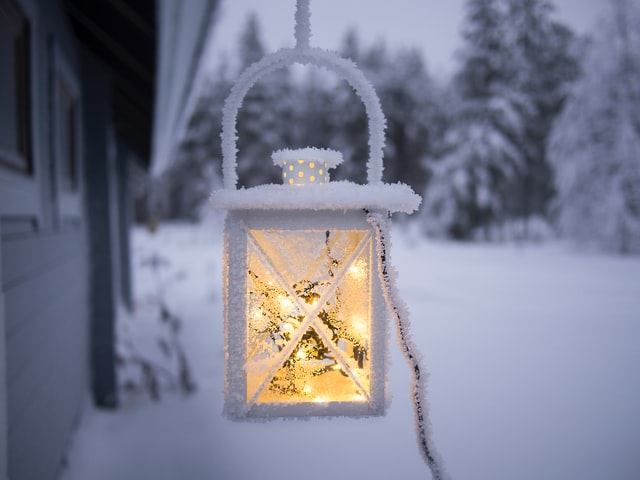In this country, we usually get a little snow each winter, enough to transform the look of your garden. Lots of us love snow, but even a little bit can be a worry for gardeners, like rain. No matter how beautiful the snow looks, it can cause some real problems in your garden. Snow is not just cold, but also heavy, which can damage your plants and garden structures. There are some steps that you can take to help your garden stay safe during snow.

Image – free for commercial use
Protecting Plants From Heavy Snow
It’s best to get your plant protection in place before the snowfall happens, but of course, it’s possible to be caught off guard. Luckily, the snow has an insulating effect, so a light covering of snow can actually act as a protective blanket against low temperatures.
Deeper snow is a bigger problem and needs to be planned for in advance. Snow is heavy. How heavy snow is depends on the moisture content. The wetter the snow is, the more likely it is to squash your plants.
Small plants are easy to protect from snow. You can use a sturdy plastic box to put over the plants as a cloche. Look for transparent boxes if you think you’ll have to leave them on for a while, and remember to clear the snow off them so the light can still get through to the plant. An opaque box is okay if you’ll only be using it for a day or two. In a pinch, an upturned plant pot will do the job. For seedling, cut the bottom of a plastic drinks bottle and use that.
If you have large plants, these are best protected by low tunnels, and it’s easy to make your own. Plastic water or gas pipe is a cheap option for making hoops and is easy to cut to size with a hacksaw. Make sure your hoops are securely fixed in place so they don’t collapse under heavy snow. Slide each end over a length of rebar hammered into the ground, or feed the ends into rigid plastic piping. Link them with a central crosspiece. You can reinforce your tunnels by cladding them with wire mesh before adding a cover.
The tunnel’s curved shape shed snow naturally. Plastic covers will keep plants dry and warm. Make sure you remove any snow that is building up so your tunnel doesn’t collapse. Don’t use horticultural fleece, as the weight of the snow can tear the fabric.
Garden Structures And Snow
It’s not just your plants that are at risk of damage from snow loading. Make sure you dislodge any snow from the roofs of sheds or greenhouses where you can. If you have polytunnels, the shape of them should encourage snow to slip off on its own, but if it does cling, it can cause the whole structure to collapse. Make sure you knock it off so this doesn’t happen.
Fruit cages are often forgotten about in the snow, but despite having a lot of holes, a netting roof can actually hold quite a lot of snow. When this snow caves in damage both the netting and the fruit cage frame. Heavy snow landing on the plants inside could break branches too, meaning you’ll be able to produce less fruit next season.
It’s a good idea to remove the roof netting from your fruit cages if you expect snow. As soon as your autumn fruits have finished for the season, put away the roof netting, in case you get any early snowfalls. You can put it back when it’s fruit-growing time again.
Remember to keep your guttering clear and in good repair, so when the snow melts, the water has somewhere to go. The importance of gutter installation and maintenance can’t be over-estimated. If water can’t drain properly, it can cause major damage to your roof, including leaks.
Harvesting In Snow
It can be worrying to find that your winter crops have been buried under a blanket of snow, but the snow actually insulates the soil and prevents it from freezing too solidly. This means it is actually often possible to dig down through the snow and lift root crops that have been left in the ground. As long as you can find them, you should still be able to harvest them.
Brussels sprouts, cabbage, purple sprouting broccoli, and the hardier varieties of the leek can all stand up to a covering of snow and remain in good condition for harvesting.